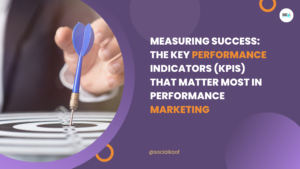
1. Introduction
Are you looking to improve your website’s performance and increase conversions? Do you want to make informed decisions based on real user data rather than guesswork? If so, you’ve come to the right place. In this comprehensive guide, we’ll dive into the world of A/B testing and show you how to leverage this powerful technique to optimize your digital presence.
2. What is A/B Testing?
A/B testing, also known as split testing, is a method of comparing two versions of a webpage or app to determine which one performs better. It’s a cornerstone of conversion rate optimization (CRO) and an essential tool for any business looking to improve its online presence.
By running A/B tests, you can:
– Increase website conversions
– Improve user experience
– Optimize your marketing efforts
– Make data-driven decisions
3. Real-World A/B Testing Success Stories
To illustrate the power of A/B testing, let’s look at some impressive results from various industries:
a) E-commerce: Amazon, the e-commerce giant, reportedly conducts thousands of A/B tests annually. This relentless testing has contributed to their 35% year-over-year revenue growth in recent years.
b) SaaS: Hubspot, a leading marketing software company, increased their form submission rate by 711% through A/B testing their call-to-action button copy.
c) Media: The New York Times saw a 34% increase in article engagement after A/B testing their headline formats.
d) Travel: Booking.com runs over 1,000 A/B tests simultaneously, which has helped them achieve a 3.5% increase in conversions year-over-year.
These examples demonstrate that regardless of your industry, A/B testing can drive significant improvements in key metrics.
4. The Importance of A/B Testing in Digital Marketing
In today’s competitive digital landscape, relying on gut feelings or assumptions is no longer enough. A/B testing allows you to validate your ideas with real user data, ensuring that every change you make to your website or app is backed by evidence.
How to increase website conversions through A/B testing
A/B testing is crucial for increasing website conversions. By systematically testing different elements of your site, you can identify what resonates best with your audience and drives them to take action. For instance, Moz, a well-known SEO software company, increased their homepage conversions by 52% through rigorous A/B testing of their call-to-action placement and messaging.
5. Getting Started with A/B Testing: A Step-by-Step Guide
a) Identify Your Goals
Before you begin any A/B test, it’s crucial to define what you want to achieve. Are you looking to:
– Increase email sign-ups?
– Boost product sales?
– Improve click-through rates on your calls-to-action?
Having clear goals will help you focus your testing efforts and measure success accurately.
b) Choose Your Variables
Once you’ve identified your goals, decide which elements you want to test. Common variables include:
– Headline copy
– Button colors and text
– Images and videos
– Page layout
– Pricing structures
Remember, it’s best to test one variable at a time to ensure accurate results.
c) Create Your Variations
Now it’s time to create your variations. For example, if you’re testing a headline, you might have:
Version A (Control): “Sign Up for Our Newsletter”
Version B (Variation): “Get Exclusive Tips Delivered to Your Inbox”
Ensure that your variations are significantly different to yield meaningful results.
d) Split Your Traffic
To run an effective A/B test, you need to split your traffic evenly between the two versions. Most A/B testing tools will handle this automatically, ensuring a random and equal distribution of visitors.
e) Run Your Test
Launch your test and let it run for a statistically significant period. The duration will depend on your traffic volume and the size of the change you’re testing.
f) Analyze the Results
Once your test has concluded, it’s time to analyze the data. Look for statistically significant differences between the two versions. Most A/B testing tools will provide you with detailed analytics and confidence levels.
g) Implement the Winner and Iterate
If one version clearly outperforms the other, implement the winning variation. However, don’t stop there! Use the insights gained from your test to inform future optimizations and tests.
6. Best Practices for Effective A/B Testing
Common mistakes to avoid in A/B testing for website optimization
To ensure your A/B tests yield reliable results, avoid these common pitfalls:
a) Testing Too Many Variables at Once: This can make it difficult to determine which change caused the improvement. Stick to testing one element at a time for clear results.
b) Ending Tests Too Early: Don’t jump to conclusions based on early data. Allow your tests to run until you have statistically significant results.
c) Ignoring External Factors: Be aware of seasonal trends, marketing campaigns, or other external factors that might influence your results.
d) Not Considering Mobile Users: With mobile traffic continuing to grow, ensure your A/B tests account for both desktop and mobile experiences.
e) Failing to Follow Up: A/B testing is an ongoing process. Use the insights from each test to inform your future optimization efforts.
7. Advanced A/B Testing Techniques
As you become more comfortable with basic A/B testing, you can explore more advanced techniques to further optimize your digital presence.
a) Multivariate Testing
While A/B testing compares two versions of a page, multivariate testing allows you to test multiple variables simultaneously. This can be useful for understanding how different elements interact with each other.
b) Segmentation in A/B Testing
Not all users are the same. Segmenting your audience based on factors like geography, device type, or user behavior can help you uncover insights specific to different user groups.
How to use A/B testing for personalized user experiences
A/B testing can be a powerful tool for creating personalized experiences. By testing different content or layouts for specific user segments, you can tailor your site to meet the unique needs of different audience groups.
8. Tools for A/B Testing
There are numerous tools available to help you conduct A/B tests. Some popular options include:
a) Google Optimize: A free tool that integrates seamlessly with Google Analytics.
b) Optimizely: A comprehensive experimentation platform with advanced features.
c) VWO (Visual Website Optimizer): User-friendly tool with a visual editor for creating variations.
d) AB Tasty: All-in-one conversion optimization platform with A/B testing capabilities.
Choose a tool that fits your budget, technical expertise, and specific needs.
9. Measuring the Impact of A/B Testing on Your Bottom Line
While A/B testing can lead to improved metrics like click-through rates or time on page, it’s essential to tie these improvements to your business’s bottom line.
Calculating ROI from A/B testing experiments
To calculate the ROI of your A/B testing efforts:
1. Track the increase in conversions resulting from successful tests.
2. Assign a monetary value to each conversion.
3. Calculate the total revenue increase.
4. Subtract the costs of running the tests (tools, time, resources).
5. Divide the net profit by the cost of testing to get your ROI.
This calculation will help you justify the resources invested in A/B testing and secure buy-in for future optimization efforts.
A/B Testing ROI Case Study
Let’s look at a real-world example of A/B testing ROI:
A mid-sized e-commerce company invested $10,000 in A/B testing tools and resources over six months. During this period, they ran tests on their product pages, resulting in a 15% increase in their conversion rate. This boost in conversions led to an additional $150,000 in revenue.
ROI Calculation:
– Additional Revenue: $150,000
– Cost of Testing: $10,000
– Net Profit: $140,000
– ROI = (Net Profit / Cost of Testing) x 100 = (140,000 / 10,000) x 100 = 1,400%
This impressive 1,400% ROI demonstrates the potential financial impact of a well-executed A/B testing strategy.
10. The Future of A/B Testing
As technology continues to evolve, so too will A/B testing methodologies. Keep an eye on these emerging trends:
a) AI-powered testing: Machine learning algorithms that can automatically identify and test promising variations. Companies using AI-driven A/B testing have reported up to 30% improvement in conversion rates compared to traditional methods.
b) Cross-device testing: Tools that allow for seamless testing across multiple devices and platforms. With mobile traffic accounting for over 50% of global web traffic, cross-device testing is becoming increasingly crucial.
c) Real-time personalization: A/B testing that adapts in real-time based on user behavior and preferences. Early adopters of this technology have seen conversion rate improvements of up to 25%.
11. Conclusion: Embracing a Culture of Continuous Improvement
A/B testing is not a one-time effort but an ongoing process of optimization and learning. By embracing a data-driven approach to decision-making, you can continuously improve your digital presence, enhance user experience, and drive better business results.
Consider these impressive statistics:
– Companies that use A/B testing are 2x more likely to see large increases in sales year-over-year.
– 77% of companies run A/B tests on their websites, with top performers running 5+ tests per month.
– Businesses using A/B testing have reported conversion rate increases of up to 300% in some cases.
Remember, every small improvement can compound over time, leading to significant gains in conversions and revenue. So, start small, test often, and let the data guide your way to digital success.
Are you ready to boost your conversions with data-driven decisions? Start your A/B testing journey today and unlock the full potential of your website or app!










